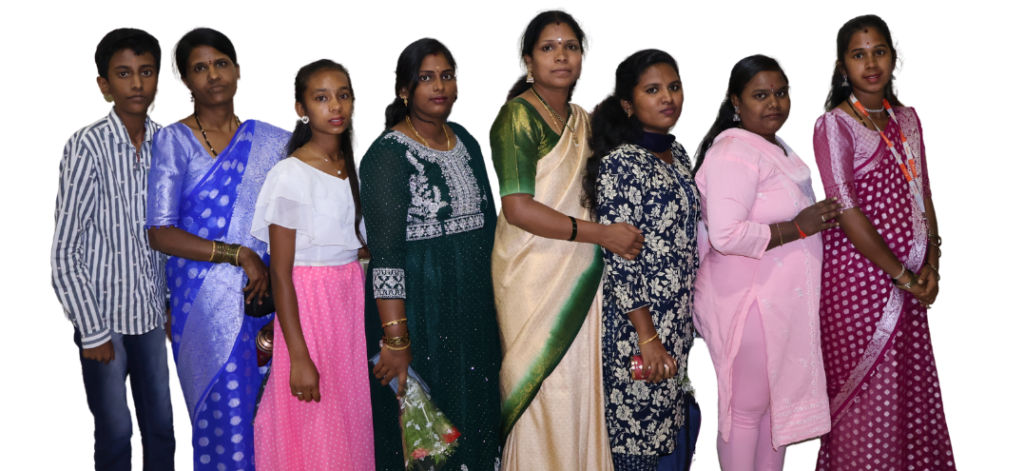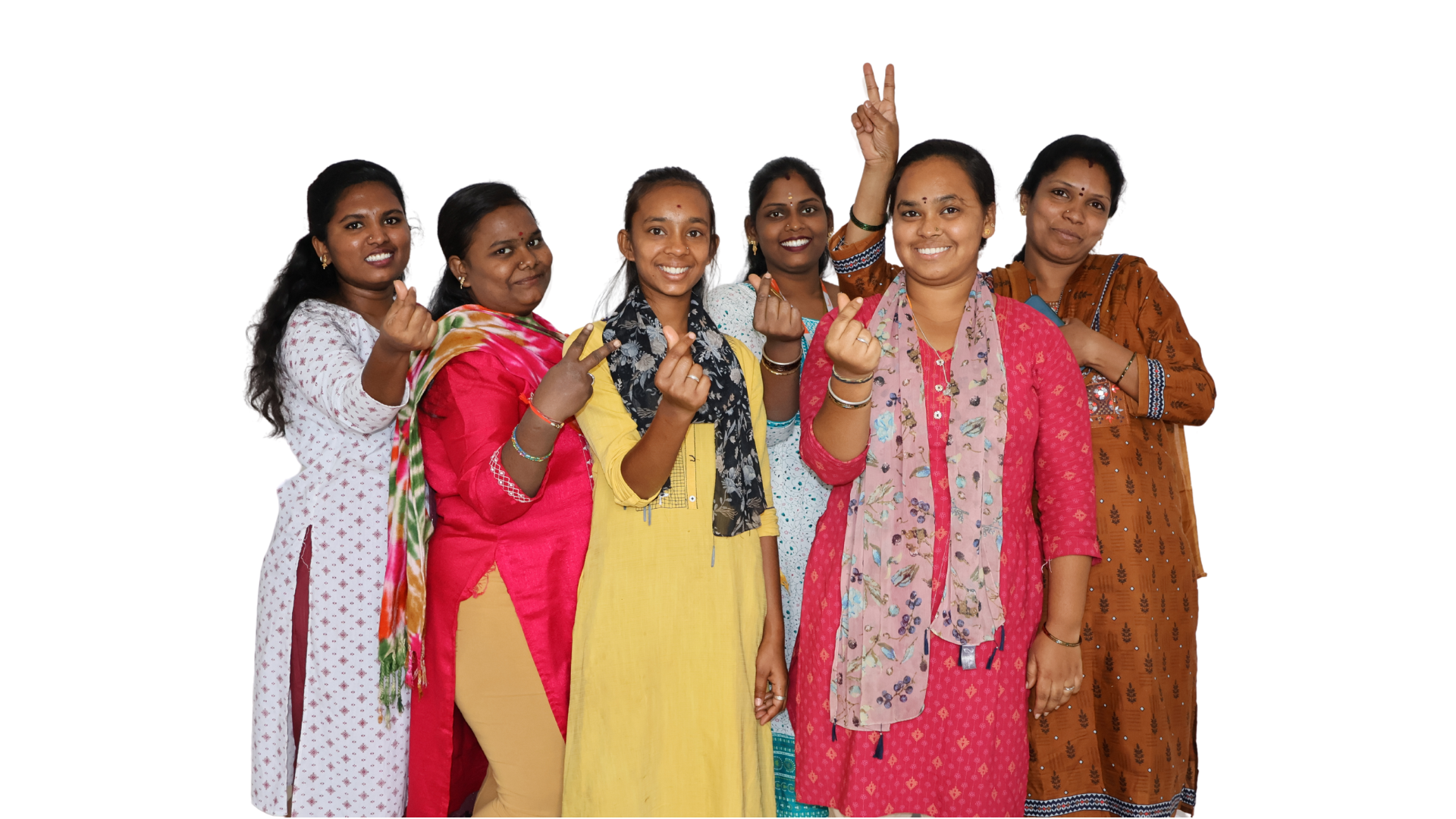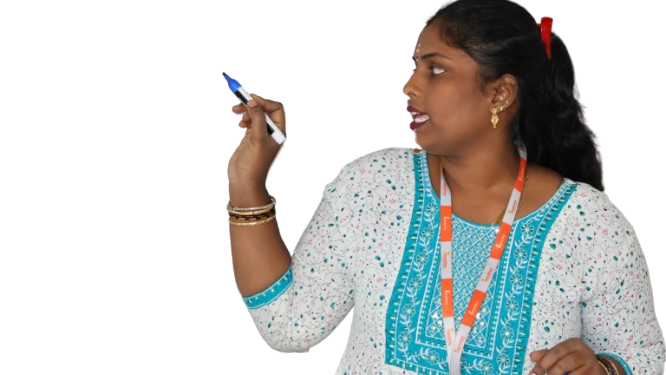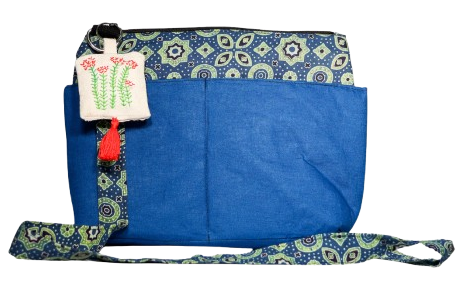COSTUMES CONFIDENCE
AND CHANGE
WASTE PICKERS
INTO THE SPOTLIGHT


A LIFE IN THE MARGINS

THE FIRST STITCH
“I stitched my first blouse, and I couldn’t believe I had made something that someone would wear,” said Meena, smiling shyly. “It made me feel seen.”

THE CURTAIN RISES
That feeling of being seen came into full bloom when Christ University’s Liberal Arts Department invited the women to design and stitch costumes for Navarasa, the university’s prestigious annual cultural showcase.
What began as a tailoring assignment became something far more transformative. It was the first time these women were engaged not for labour—but for their craft.
On the night of the performance, as the lights dimmed and the dancers took to the stage dressed in the women’s creations, something remarkable happened. The women were called to the front. Applauded. Celebrated.
The highlight was also a documentary that was presented at the event where all the five women detailed their stories and aspirations symbol of themselves speaking their stories.
“I cried,” said Meena, her voice thick with emotion. “All these years, I’ve hidden my work. But that night, I told my children, ‘I made those clothes. People clapped for me.”
WALKING TWO WORLDS
What makes this story especially unique is that these women are not abandoning waste picking. Most of them still wake up early, do their rounds, and then return to tailoring in the afternoons
This hybrid livelihood model has allowed them to increase their income without disrupting Bengaluru’s waste ecosystem, which still depends heavily on informal workers. Sambhav Foundation and H&M Foundation have been mindful of this balance, ensuring that any intervention adds value without causing unintended harm to an already fragile system
“We’re not replacing their old work, ” says a Sambhav spokesperson. “We’re enriching it—building a bridge between environmental contribution and creative economy.”

MORE THAN JUST LIVELIHOODS
For the H&M Foundation, the success of this initiative speaks to a broader vision of sustainability—one that integrates social inclusion, gender empowerment, and economic resilience.
“These women were already stewards of the environment through their waste work, ” says a representative. “Now, they’re being recognized as creators and entrepreneurs. This is the sustainability
we believe in—human-centred, inclusive, and rooted in dignity.”
A MODEL FOR CITIES
EVERYWHERE
As Bengaluru grapples with the complexities of urban waste and informal labour, the story of these five women offers a hopeful blueprint. One that shows how cities can empower workers without displacing them. How recognition can be a form of justice. And how a needle and thread can quietly sew together
Today, when Anita sits behind her sewing machine, she no longer wonders if she’ll be seen. She knows her work matters—on the street, in the studio, and now, on the stage.
And that, in every sense of the word, is a transformation stitched with care.



